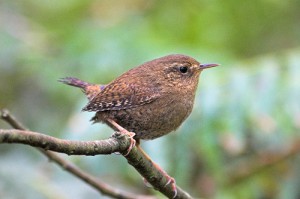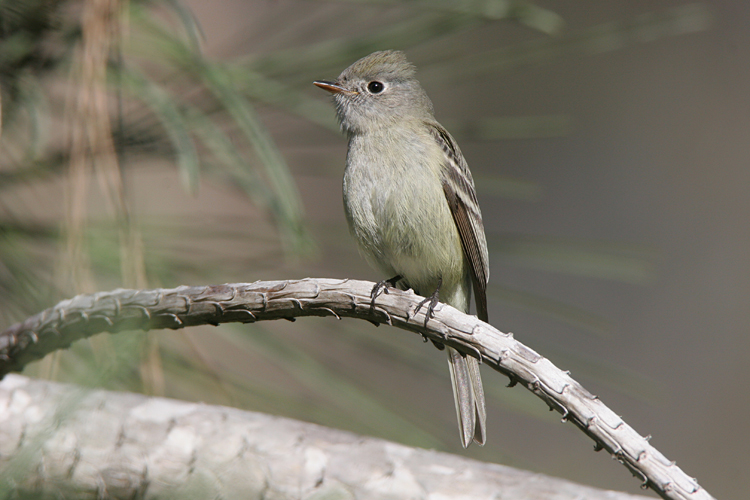Continued from previous post. Again, I stole all these photos off the interweb thing.
10. Short-tailed Shearwater
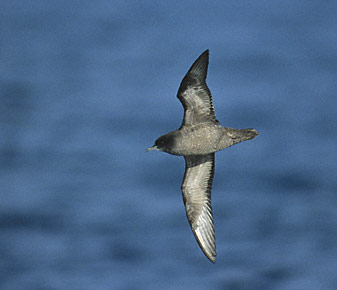 |
| Short-tailed Shearwater (photo taken from avesphoto.com) |
|
If you recall, I posted a link to a David Sibley article where he mentions how melting sea ice may be causing some birds to switch oceans or wander farther than normal. Like Glaucous-winged Gull, David Sibley thought that Short-tailed Shearwater is a species likely to do that. It’s a long shot since this species doesn’t show a lot of vagrancy, but who knows! My bet would be for one to show up along the coast of Hudson’s Bay or James ball in the fall.
When? November
9. Bar-tailed Godwit
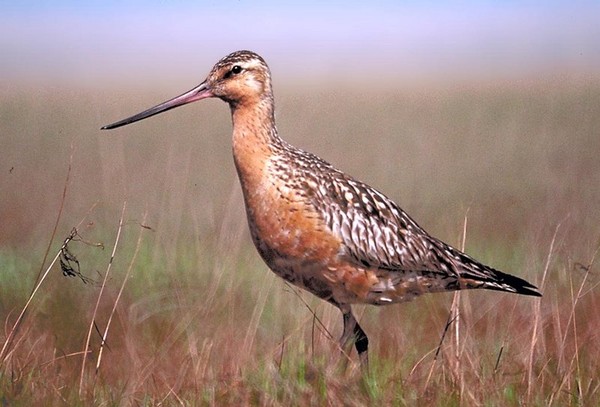 |
| Bar-tailed Godwit (photo taken from infonews.co.uk) |
|
There are 4 species of godwits alive today. Two of them, Marbled and Hudsonian, breed in Ontario and are somewhat common throughout much of North America. Bar-tailed and Black-tailed Godwits are rare vagrants to North America, though Bar-tailed breeds in Alaska. The rarer of the two (Black-tailed) is already on the Ontario list, but Bar-tailed has yet to show up. However, this species has quite a few records up and down the coast of North America. The only problem is that this species is strictly coastal. That being said, there are a couple records inland and I think it is only a matter of time before Ontario gets one. Fun fact of the day: Bar-tailed Godwits have the longest non-stop flight of any bird, with one individual traveling over 11,000 km from New Zealand to China.
When? August or September
8. Allen’s Hummingbird
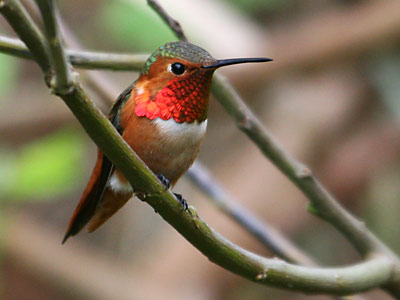 |
| Allen's Hummingbird (photo taken from nps.gov) |
Every fall some wayward southwestern hummingbirds somehow make their way to the northeast states and provinces. Last year was a banner year for Anna’s hummingbirds. Among the notable records was Newfoundland’s 1st ever, an incredible record of a bird that managed to survive a few months of their harsh winter. Ontario had its first Anna’s last year as well. Allen’s Hummingbird and Rufous Hummingbird are two similar species that also occasionally end up in the northeast. Ontario has had a number of Rufous Hummingbirds, many that could not be assigned to species (Selasphorus sp.), and no confirmed Allen’s Hummingbirds. Its only a matter of time, though. Ohio had its first in 2009 and Missouri had its first in 2008. There are also records for Georgia, Virginia, Illinois, Louisiana, Massachusetts, Mississippi, New Jersey, both Carolinas, Tennessee, etc. Ontario will be soon.
When? November
7. White-tailed Kite
 |
| White-tailed Kite (photo taken from flickriver.com) |
White-tailed Kite is a beautiful, distinctive species that is a year round resident in the American southwest, Mexico, and Florida. Unlike a lot of species that do not migrate, White-tailed Kite actually does exhibit some vagrancy with records over much of the continent. Ontario seems to get at least one record of a kite every spring, though they usually end up being Mississippi Kite, or rarely, Swallow-tailed Kite. I think that a White-tailed Kite would be an overdue record for the Ontario list.
When? Mid May
6. Redwing
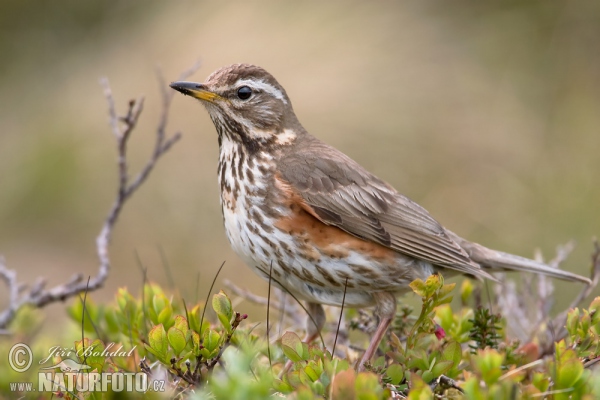 |
| Redwing (photo taken from naturephoto-cz.com) |
Some winters, weather systems rolling off of western Europe hit eastern North America and scatter a few rare birds around. Occasionally, two species of thrush are found (both ABA code 4): Fieldfare and Redwing. In the past, Fieldfare was the “dominant” species that would end up in eastern North America (it’s on the Ontario list) in the past, but recently, Redwing is showing up more regularly. Just this past winter, a handful was present in Newfoundland and Massachusetts.
When? January
5. MacGillavray’s Warbler
 |
| MacGillavray's Warbler (photo taken from flickr.com) |
MacGillavray’s Warbler was on the Ontario list at one point, but later taken off because the location where the May 20, 1890 specimen was supposedly found has a number of inconsistencies. I do think that the chances of one showing up in Ontario are pretty good, though. There are a number of records of this western species for central North America and the east coast, including recent late fall records from Maine and Massachusetts (2009). MacGillavray’s is quite similar to Mourning Warbler and at one point they were considered the same species. This will make identification difficult if/when is detected in Ontario!
When? Late November/early December, or late May/early June. I’m gonna go with early June.
4. Glaucous-winged Gull
 |
| Glaucous-winged Gull (photo taken from roysephotos.com) |
|
David Sibley wrote an interesting article about how the melting of sea ice in the Arctic circle may cause some species to end up on the wrong side of the continent (see the article:
http://www.sibleyguides.com/2010/09/birding-and-a-warming-arctic/). The gist of the article is that melting sea ice allows birds to travel much farther than in the past because there was less of a barrier of continuous ice. Birds travelling a few hundred kilometres up in the arctic may end up 1000’s of kilometres off course by the time they get down here! Glaucous-winged Gull is a species that may be affected by this. Newfoundland had its second record of GWGU in 2006, Colorado has had a few, and Illinois had one a couple years ago. I think that within the next 5 years Ontario will get one. The northern coast of Ontario seems a likely place, as does the Niagara River, but my guess is as good as anyone’s!
When? Early winter
3. Cassin’s Vireo
 |
| Cassin's Vireo (photo taken from zuropak.com) |
This is another one that is not on the Ontario checklist yet, despite a few possible individuals over the years. I know at least 3 birders who claim to have seen one in Ontario. The problem with this species is, of course, it’s identification. Formerly called the Solitary Vireo, it was split into three species – Blue-headed, Cassin’s and Plumbeous – with each species having some overlap in plumage with the other ones. There are a few accepted records for the northeast, though.
When? Late April/early May
2. Red-necked Stint
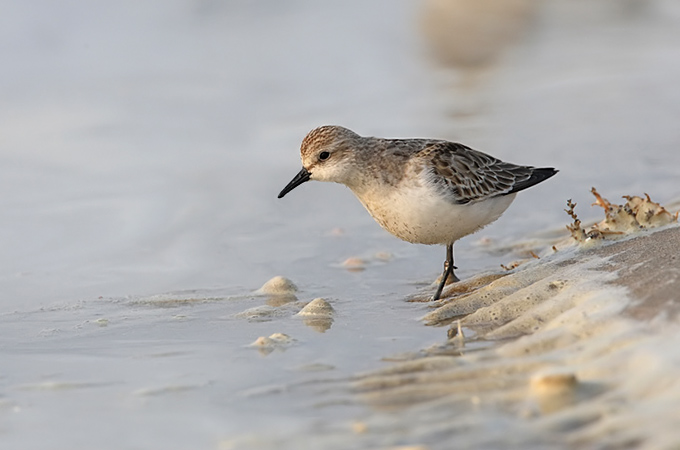 |
| Red-necked Stint (photo taken from birdskorea.org) |
This is probably my most wanted bird to find in Ontario. I don’t quite know why, other than the fact that I love shorebirds! Red-necked Stint may be hard to pick out from a flock of shorebirds, but if one knows what to look for it should be doable. The four stints are Old World species that casually turn up in North America. There are quite a few records of Red-necked Stint on the east coast with some inland records as well. One has been found in Ohio – just across the lake from southern Ontario. Red-necked Stint, much like MacGillavray’s Warbler, is a bird that was once on the Ontario list and then removed - a Toronto bird was first accepted and later rejected.
When? Late July
1. Reddish Egret
 |
| Reddish Egret (photo taken from tgreybirds.com) |
|
Reddish Egret is the only regular North American wading bird that has yet to find its way onto Ontario’s list. I don’t really know why – there are records all up and down the east coast and a bunch in the middle of the continent too! I suppose that a juvenile Reddish Egret, the most likely age class to occur in Ontario, may be harder to pick out unless you know what you’re looking for. So anyways, I think that this is the next species to added to the Ontario list!
When? August
Of course there are many other possible birds I left off the list – some honourable mentions include: Short-tailed Hawk, White-tailed Tropicbird, Clapper Rail, Surfbird, Mountain Plover (aka Colorado dirtpiper), Yellow-legged Gull, Dusky-capped Flycatcher, Sage Sparrow, White Wagtail, Williamson’s Sapsucker, Brown-headed Nuthatch etc.....










































